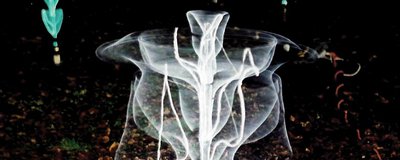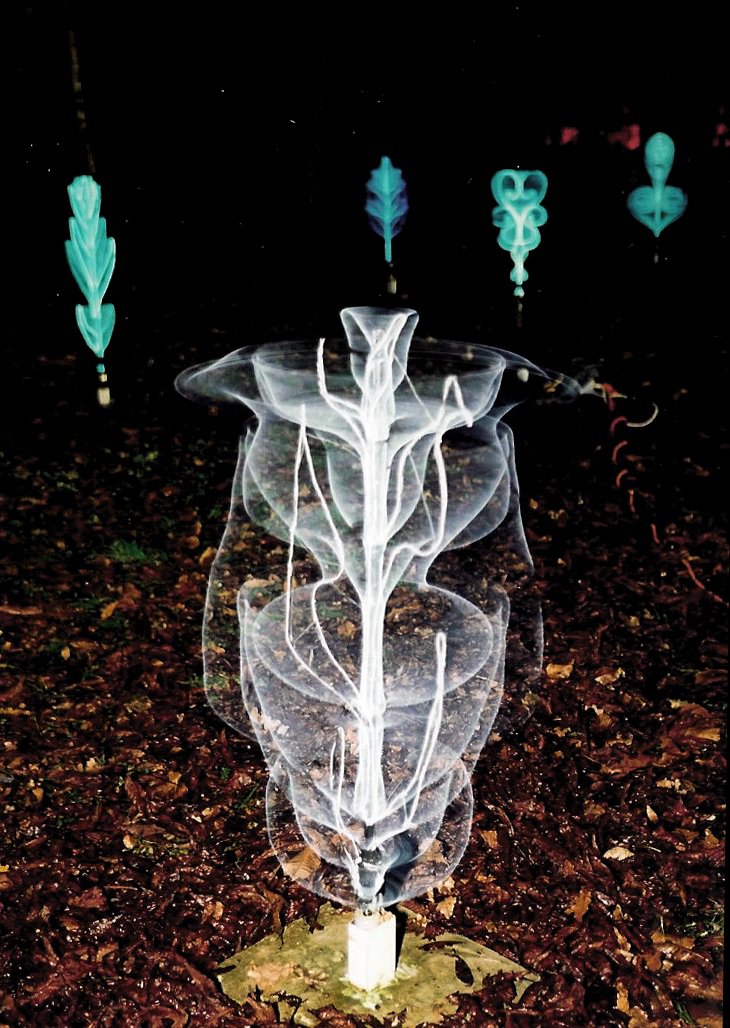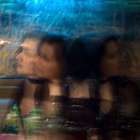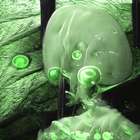groWorld Initiative

Abstract
Abandoning the methods of control, which have dominated most of the human societies throughout history, the systems that will steer the future will be self-organizing. GroWorld proposes a framework of activities that allows dynamic and flexible systems to evolve. The prospects of GroWorld lie in mutual motivation and inspiration arising from multidisciplinary collaboration encompassing both hemispheres of the human brain.
Full text
FoAM’s GroWorld Initiative at SEAFair 2001
With the generous support from Open Society Institute, Zagreb, Croatia
1. What is GroWorld
The GroWorld initiative originated in FoAM, a laboratory researching multidisciplinary models of cultural production, as a proposal for a research strategy, anchored in a one broad interest field:
- Evolution and Interaction of Dynamic Systems
This field is currently of interest to disciplines ranging from physics, biology, art, mathematics, computer science, economics, social sciences and culture in general. A fundamental change in human perception and experience of reality is slowly beginning to be apparent in all segments of the global population, influenced by:
- economic and cultural globalization
- individualization
- disappearance of natural resources
- democratization
- information and communication networks
- complex scientific and technological problems
- multi-cultural societies
2. GroWorld Methodology
Abandoning the methods of control, which have dominated most of the human societies throughout history, the systems that will steer the future will be self-organizing. GroWorld proposes a framework of activities that allows dynamic and flexible systems to evolve. The prospects of GroWorld lie in mutual motivation and inspiration arising from multidisciplinary collaboration encompassing both hemispheres of the human brain.
3. Core Values
- The core values of this initiative include:
- increase in creativity through a human approach to technological and scientific innovation
- sustainable development of technologies and services for the benefit of future societies
- innovation through a unique fusion of multidisciplinary knowledge and assets
- fulfillment of humankind’s unlimited imagination
4. Long Term Research
The long term strategy of GroWorld is to focus on researching evolution and interaction of dynamic systems. We look at the convergence of scientific, technological and cultural paradigms, covering the subject of growth and transformation (in physical, virtual and mixed reality habitats).
5 Growth and Transformation
Growth and transformation are processes that characterize current artistic and scientific curricula. FoAM focuses on developing short and long term projects that deal with 2 types of growth:
- Life (physical)
- Artificial Life (virtual)
and looks for symbiosis between the two.
Today I will present 3 currently active projects dealing with these topics:
- groWorld_HPI, a critique, discussion and practice against global biopiracy
- Tgarden, responsive playspace
- MutaGen, a-life research and visualisation
- Sym_bio_sys. growing a network of public gardens.
- groWorld_HPI
This work wishes to inspire discussions about the decrease of the global bio-diversity, due to the practices of transnational ‘life industries’. These industries range from pharmaceutical to agricultural, dealing with genetic manipulation of human, animal and plant cells, birth control and patenting organic materials such as seeds and DNA samples. There are numerous issues arising from the commercialisation of all life on Earth, that are pressing to be brought to attention of both local communities and global networks of professionals involved in developing technologies for these industries.
I will give a short overview of our critique, after which I will show a groWorld_HPI prototype shown on the BurningMan festival in Nevada, USA, and in Starlab in Brussels. Before moving on to the next project I will talk about our future plans for HPI.
6.1 Critique
Global markets are biased to favor the countries who already have a large technological advantage, industrialized countries who have dominated the economy since the industrial revolution. These countries have a long history of appropriation of indigenous plants from 3rd world countries, and have already caused a large amount of damage to the global bio-diversity, in order to protect their colonial interests. Monoculture plantations have destroyed several hundreds (if not) of species in the last two centuries.
With the introduction of biotechnology, linked to the global economy and intellectual property mechanisms is posing an enormous threat to the evolution of plant life worldwide. On one hand, large transnational chemical concerns are patenting all genetically altered lifeforms, genes and traits, that independent research becomes impossible. On the other hand, small farmers and producers cannot compete with the large industries and are forced to buy transgenic crops, that not only threaten the biodiversity, but can cause dangerous mutations in unexpected plants and animals. As the farmers are encouraged to focus on particular monocultures, in order to maximize their revenue streams, their fields are losing genetic diversity needed for adaptation of the crops to the local conditions. Furthermore, farmers are discouraged from cross-breading and developing new species, as they might be infringing a patent and consequently could be prosecuted.
Not only the small producers of plants used in the food and pharmaceutical industry (among others) are the victims of this so called biopiracy. Each one of us cannot be sure what kind of dangerous substances we are consuming with our everyday genetically modified food and dietary supplements. Third world countires, that are at this moment the largest source of raw bio-genetic material are being sucked dry, losing their natural resources, while the products that are developed from the same resources are privately owned by one-or-the-other corporation. The peoples that have a long tradition of using indigenous plants for healing purposes now have to license their own production processes from a western conglomerate owning a patent.
6.2 Prototype 0.9: BurningMan 2000
To start this discussion, we chose one of the harsher habitats on our planet: the desert. We have built an installation that became a meeting point and a site for exchange of information and experiences concerning the topic of permaculture and decrease of biodiversity and biospecificity due to biopiracy and related economic weapons.
The installation was conceived in three stages, but the weather conditions in the desert have changed our plans and groWorld became a piece in two installments: The Trans.Dimensional.Forest and the GroWth.Bunker.
The GroWthBunker is a geodesic dome situated in the Trans.Dimensional.Forest, and was the site where people could find shelter from the wind, the rain, the sun and the cold, and discuss different issues that were publicized (and broadcasted) via a local radio station.
The insides of the bunker were designed to resemble the roots of an electronic forest. Density of the environment depended on the amount of people inside the bunker and their movement across the floor. The spatialised sound provided a feeling of constant growth and decay enveloping all life forms inside the bunker.
Surrounding the bunker, there was a responsive electronic forest, modeled after extinct plants from around the globe. During day, visitors could read the epitaphs (excerpts from journals regarding the extinction of the species). During night, the forest resembled a two dimensional drawing of different plants from far. When the visitors would come close to the plants, they would start moving, creating 3d fields of light. the forest would become inflated…

6.3 Future Plans
Our future plans are looking at different research topics, focusing on the ‘growth process’ in the broadest sense of the word:
- symbiosis and mutations of ‘natural’ and man-made environments, technologies and entities
- morphology and adaptability of eco-systems around the globe
- entanglement of the urban with the biological and bio-technological environment
- evolutionary esthetics, as the convergence point between art, environmental studies, biology and digital technologies
- growth and interaction of trans-local communities
- adaptive and evolving (media) technologies
- extension of the neighbourhood public garden into a growing network of ecological and cultural parks
We are especially looking at interfaces between different worlds, including:
- HCI
- HPI (human-plant)
- HHI (human-human)
- PCI (plant-computer)
Together with developing technologies that can facilitate translocal discussions on the topic of biodiversity. We are particularly interested in enhancing physical (public) environments enabling Social Interaction for collaboratively shaping the physical and virtual reality.
These technologies should be:
- accessible to more people (public space)
- adaptable for several applications (shaping physical & virtual, flexible, easy to apply and use for non-expert)
- adaptable to both indoor and outdoor spaces, different climates and cultures
7. TGarden (FoAM and Sponge project)
A different type of growth that FoAM is actively exploring, is the growth of artificial realities. In the coming minutes, i will present the TGarden project, and Mutagen, one of the related projects, dealing specifically with simulated environments.
The TGarden explores methods of artistic expression and social interaction in augmented reality. It is a responsive environment (“play-space”) where visitors-players can fully shape their visual, aural and tactile experience. It is a space for a free-play that is opposed to the notion of pre-composed gaming environment. Instead of having to adapt to the rules, visitors’ movements and their interaction with other players will evolve the TGarden space in myriad of experiential states. The important characteristic of the TGarden is its focus on social shaping of the play, and therefore, the space will reveal itself in a different way to single players than to groups of players.
The responsive environment of the TGarden is not a neutral space in which objects and events take place. Its energy and movement evolve even without the interaction with the players. The flows of energies, such as heat, make the TGarden a very dynamic system. The events in the TGarden will often happen at the edge of perception, enticing intuitive and instinctive reactions, on the threshold of sub|consciousness.
TGArden involves designing an aggregation of systems that can communicate and influence each other radically (even to the point of affecting each other’s constants). There are 3 main design systems intersecting in the Tgarden environment: topology, physics, biology.
Topology is used as the conceptual framework and for the geometrical transformations of the environment. It allows an open design methodology and mapping of different objects/languages/events to one another. Using topology in the systems and media design encourages the usage of more flexible and less hard-coded rules, that give the design a continuous quality, even when dealing with complex deformations of objects in time.
Physics will allow us to design the system from the viewpoint of energy, and to look at media atomized parts of this system. By manipulating media as particles or grains under the influence of physical forces, the environment should appear malleable and the responsivity to players’ actions easily observable. The media will respond in physical ways through simulations of physics; both real and magical physics. Examples of real physics are gravity, collisions, damping, elasticity, light and shadows. Much like cartoon characters in cartoon worlds react to cartoon physics, our magical physics are a new physics that we might dream about that exist and respond to players in the world of TGarden.
Biology has several examples of systems and organisms using non-syntactic visual and aural communication, that we can translate into effective interaction models between the media and between the players and the media. A good example of such communication is bioluminescence, where the energy that the organisms gain through feeding or chemical reactions are fully transformed into light that can be used for illumination, attraction or camouflage. Another interesting research trajectory is on the communication and task division in swarms and flocks of organisms and the morphology of complex plant structures.
8. MutaGen
Using biology as the guideline for the design system of TGarden has connected it to MutaGen, another FoAM project dealing with biological computation and modeling.
The project involves research into the evolution of communication and ‘natural’ languages in the context of simulated biological systems. Approaching the development from two perspectives: Life Sciences and Information Technology, the research is aimed at extending the field of ‘biological simulation’ beyond its current borders, through the collaboration of scientists and technologists from a wide range of disciplines.
Computer simulations are fundamentally different from biological- chemical- or physical systems. However, the development of methods for automated adaptation (that go further than programming a machine) can transform these systems into living, growing informatic entities (individuals, populations, environments). The evolution of a simulated environment can, in this case, draw upon the vast expertise of life sciences involved in describing the processes that make an organism (or an environment) ‘alive’.
A distinct aspect of Mutagen is the investigation of languages or communication processes that can describe the unique characteristics of a simulated environment as an adaptive and growing ‘computational’ system. These languages would have to evolve within a system informed by, yet different to the laws of the biological world
The development of patterns and structures over time will inevitably occur within simulated environments. The qualitative aspect of this development will be unique to each simulation. Beside the development of particular genetic configurations and communication skills, the visualisation of the simulated environments is a crucial topic in this research. Mutagen will not attempt to replicate exact biological patterns, structures or behaviours, instead, it will look for emergent properties of growing artificial life forms, which stretch, elucidate or rebuke current models.
9. Future work: Sym_bio_sys
Sym_bio_sys is a project that should establish a link between different subprojects in the GroWorld initiative. As most of the people involved in the GroWorld Initiative grew up withing the Techno- or rave culture, a perfect example of the integration of the phyto_chemical and electronic worlds, we have identified a need for a new research field: Cyberbotany, dealing with fusion of the human achievements with natural tradition and evolution. Sym_bio_sys involves building a network of public gardens that are grown by local scientists, horticulturalists, landscape architects and neighbouring communities. Furthermore, groWorld_HPI (previously presented project) will attempt to develop media technologies and interfaces for group education, information and entertainment that should be integrated in the Sym_bio_sys gardens.
Integration of cultural, ecological and technological studies will move this project towards a long term experiment in sustainable creative, technological and sociological development, connecting organisations and individuals from various disciplines and cultures in one common goal: growing an adaptive, sustainable habitat for nature and culture. this sustainability is dependent on an abundant diversity of all lifeforms, and their interrelationships that will inevitably grow at the edges of dissimilar environments, such as urban-natural, cultural-scientific, water-land.
In order to establish better contact, knowledge skills and resources exchange between the different gardens, an itinerant festival will be organized, in which people involved in growing the gardens in the Sym_bio_sys network will meet each other, and extend their contacts in scientific, technological and artistic circles. Informal travels between the gardens will be encouraged, in order to keep a continuous flow of dwellers, nomads and inhabitants, maximize edges and minimize borders.
GroW your own worlds.




